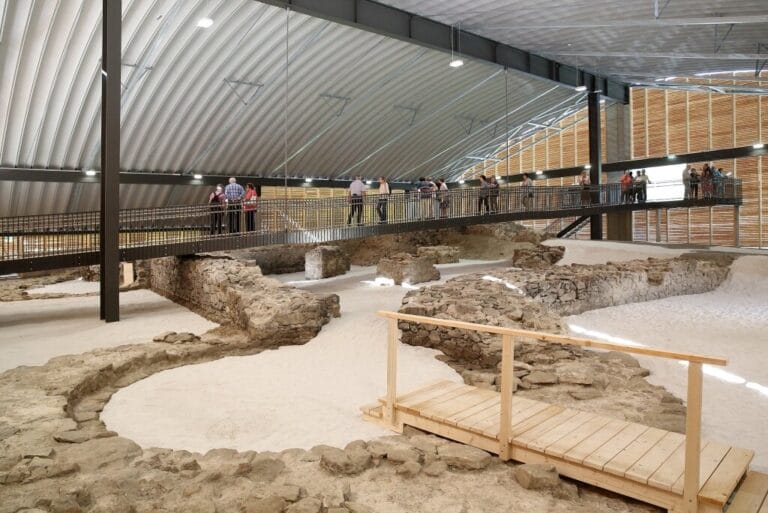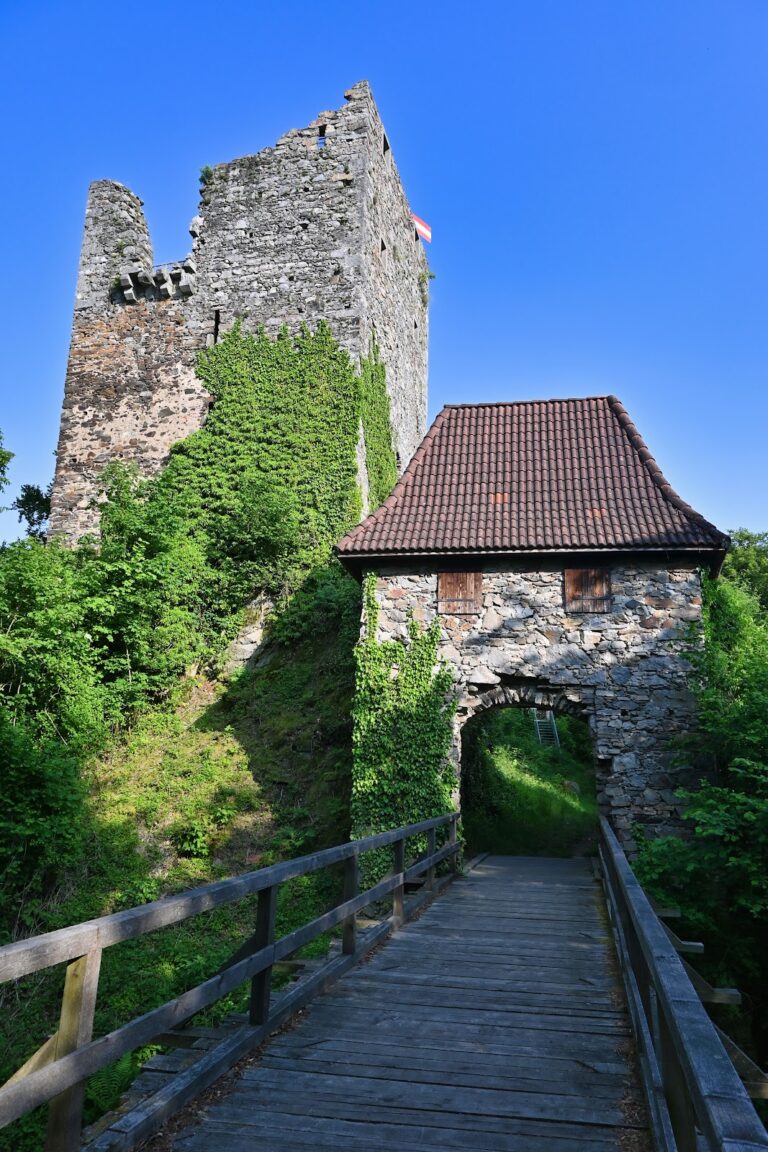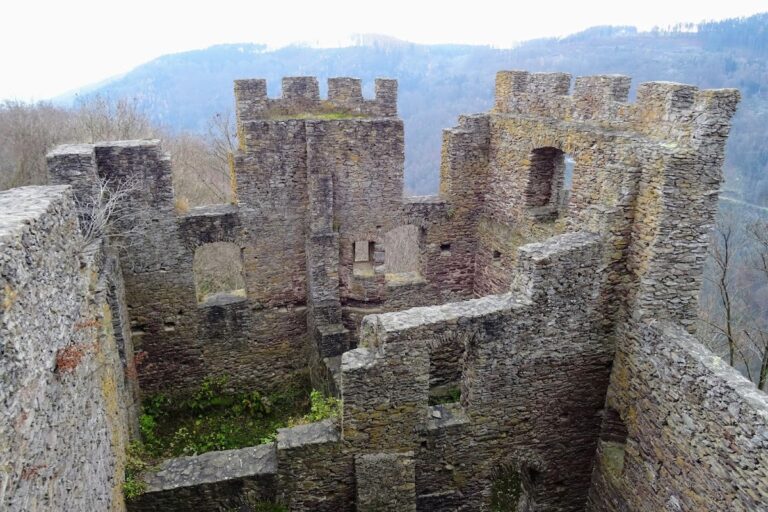Burg Wernstein: A Historic Castle in Wernstein am Inn, Austria
Visitor Information
Google Rating: 4.7
Popularity: Very Low
Google Maps: View on Google Maps
Official Website: www.wernstein.at
Country: Austria
Civilization: Unclassified
Remains: Military
History
Burg Wernstein is located in the municipality of Wernstein am Inn in Austria. It was originally built in the early 12th century by the Counts of Formbach, who were part of the medieval Germanic nobility. Constructed around 1126, the castle served as a strategic outpost overseeing the Inn River region, connected closely to the nearby Neuburg Castle.
In its earliest phase, Burg Wernstein never became the residence of an independent noble family. Instead, it was managed by appointed castle stewards, known as Burgvogts, who operated under the authority of the Counts of Formbach based in Neuburg. Ownership later changed hands, passing first to the Counts of Andechs-Meran and then briefly to Duke Frederick II of the Babenbergs, who obtained it through marriage ties. Eventually, it returned to the control of the Andechs family.
Mid-13th century turmoil brought military conflict to the castle’s story. Notably, in 1257, the Bohemian king Premysl Ottokar II seized both Neuburg and Wernstein by force, asserting claims linked to the Babenberg line’s succession. This event reflects the instability and shifting power during the period surrounding the demise of the Babenberg dynasty.
The castle’s ownership continued to shift in the following centuries. Around 1355, Eberhard V. von Walsee redeemed Neuburg and Wernstein from a financial pledge tied to the Bishopric of Passau. Later, in 1379, Duke Albert III pledged the castles as collateral to Otto von Zelking. By the early 16th century, Imperial Field Marshal Niklas Graf Salm held them as an imperial fief, demonstrating their ongoing military and administrative importance.
During the 17th century, Burg Wernstein experienced varied uses and ownership changes. In 1654, Count Georg Ludwig von Sinzendorf acquired the castle, overseeing a period when it housed a mint between 1664 and 1666, followed shortly by a silver and gold thread factory established around 1670. The property later belonged to Count Jakob von Hamilton and subsequently, in 1719, to Count Carl Josef von Lamberg-Sprinzenstein.
In 1731, the castle, together with Neuburg, passed into the possession of the Bishopric of Passau, becoming ecclesiastical property. This status remained until the secularization reforms in 1803, when the castle was transferred into private ownership. Over time, Burg Wernstein fell into disrepair but was restored in the late 20th century. The present-day municipality of Wernstein am Inn grew from the coming together of the village of St. Georgen am Inn and the settlement around the castle itself.
Remains
Burg Wernstein is a classic example of a mantle castle, a type defined by a protective curtain wall encircling the site without additional internal structures separate from this enclosing wall. It occupies a granite outcrop beside the Inn River, positioned directly opposite the Bavarian Schloss Neuburg am Inn. The natural elevation afforded a defensible position enhanced by considerable man-made earthworks.
Surrounding the rocky hill is a deep and wide moat carefully carved into the bedrock, an excavation dating from the castle’s initial construction period to boost its defenses. In front of this moat lies a pond, likely serving both as an obstacle for attackers and an additional water source linked to the castle’s security system.
Access to the castle was heavily fortified. The entrance gateway was protected by two outerworks, or Vorwerke—small outlying fortifications—and a zwinger. The zwinger is a narrow enclosed courtyard situated between these outerworks that functioned as a trap for attackers caught before the main gate. To the right of this entrance stood a tower with an adjoining long residential building designed to house the castle’s garrison. Though this tower has been partially dismantled over time, its adjacent covered longhouse now serves agricultural purposes as a barn.
On the left side of the gate is the main residential building visible today. Over centuries, modifications to this structure have altered its original defensive features, reducing its military character in favor of more domestic uses. The castle’s walls, gatehouse, and earthworks remain largely preserved, allowing observers to trace the original defensive layout.
In front of Burg Wernstein stands a replica of a Marian column, modeled closely after a design by Johann Jacob Pock dating from 1646. This religious monument adds a symbolic element to the castle’s forecourt, highlighting connections between spiritual and territorial claims during the early modern period.
Historical engravings and photographs from both the 17th century and recent times document the castle’s water defenses, curtain walls, and gatehouse, demonstrating the continuity of its visible archaeological features. Together, these remains provide clear testimony to the castle’s strategic role and the evolving nature of its fortifications across centuries.







